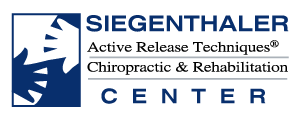ART for the Rest of Us
“Muscles are the underdogs of the medical world,” says Keren Day, a Manhattan chiropractor and ART therapist. Never heard of ART? Most haven’t. And while orthopedists can surgically repair joints, and physical therapists supervise stretching and strengthening programs often without directly laying their hands on the muscle tissue itself, what elite athletes have learned is that there’s an alternate world of injury treatment, where therapists poke and prod soft tissue with their hands to often extraordinary effects. Some of the most common problems – lower-back pain, carpal tunnel syndrome, runner’s knee – are ideal for ART. “Tight, dysfunctional muscles are tugging and pulling at the joint or irritating nerves,” Day says, “and often that’s what is causing the injury.” First developed in the 1980s by Colorado sports chiropractor Mike Leahy, ART quickly spread among the ranks of pro athletes, though they’re hardly the only ones who can benefit.
Many people put up with low-back pain or have surgery to remove damaged vertebral disks, but both situations can often be avoided with ART. To relieve low-back pain, therapists dig their thumbs into the psoas muscle, which runs from spine to hip and contracts when you sit all day, forcing the muscles in your lumbar spine to pull to keep your spine aligned. These muscles, the erector spinae, eventually become overworked and inflamed. Get the psoas to “release” with deep-tissue work, and the pain often disappears. “Without addressing the psoas, most lower back pain will always be chronic,” Day says, “and most MDs don’t even know what the psoas is.”
Carpal tunnel syndrome (CTS), which causes pain, numbness, and weakness in the wrist and hand, happens when a major nerve in your wrist area gets compressed, often from too much computer work. But CTS is overdiagnosed, according to Dr. Jennifer Solomon, a physiatrist at Manhattan’s Hospital for Special Surgery. Instead of surgery or elaborate braces and splints, the solution may be as simple as a few ART treatments to relax overstressed forearm muscles, which can cause CTS symptoms.
Runner’s knee is a chronic low-grade ache in the knee, also known as patellofemoral pain syndrome. An ART therapist will try to correct an imbalance in the four quad muscles that direct the way the kneecap tracks and can force the kneecap to rub painfully against the groove in the femur. The therapist works to relax all the quads, to get the muscles moving more smoothly and firing more strongly.
